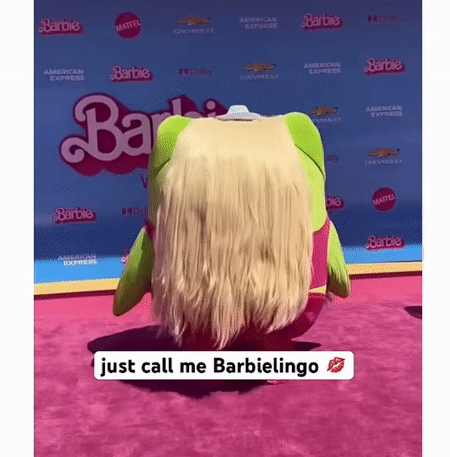🧠 Marketing lessons hidden in Duolingo shareholder letters
BirdBrains, Thick Owls, and Experiment Wins
1. Are you leaving experiment wins on the table?
2. Do you have a Birdbrain?
3. Do you know the thickest owl in Barbieland?
(Duolingo isn’t, Duolingo does, and yes, Duolingo is.)
Birdbrain is the name of their AI personalization engine. And we’ll get to the thickest owl later…
Thick owls and Birdbrains wouldn’t be possible without their culture of experimentation. Here are their principles:
⚡ Make decisions quickly
As soon as you’re confident you have the data, make the decision. This allows for maximum impact since you’re moving faster
Too often we let experiments sit on the back-burner and check them infrequently
🚀 As soon as you’re sure a roll-out is safe, show it to as many people as you can
The more people you roll it out to, the more data you have
The more data you have, the more confident you can be in the results
The more data you have, the faster you get results
The faster you get results, the faster you can roll out
The faster you can roll out, the faster your gains can compound!! 💪
🏗️ Work fast and iteratively
If a new feature isn’t perfect but it’s still better, roll it out
You can have it live while you’re working on the other improvements
💸 The order of experiments matters. Do high ROI projects first
When you do the high ROI projects first, they can compound and lead to greater impact since they’re live longer
📲 Launch on your largest platform
If most of your users are on iOS, launch there first since that’ll lead to larger gains in the long run
It’s not always possible due to engineering bandwidth constraints, but do it when possible
Credit to Sean Colombo for his awesome article in the Q3 2023 letter.
ℹ️ Side note: Did you know 90% of the language learners in the world are learning English? Wild.
Duolingo’s AI approach:
Duolingo is using a custom GPT-4 implementation to recommend the right content and create unique personalized exercises based on your experience (Birdbrain is the content personalization engine).
If your product has any type of content, there are opportunities for you to create more personalization for your users.
Duolingo Max gives you a chatbot where you can ask why your answer is right or wrong. And you can even talk to Duolingo characters to practice conversational skills.
Duolingo Max creates a higher-priced subscription tier. And add tons of value at the same time. (Casey Winter’s article on when/how to build a 2nd product is semi-relevant here.)
Data competitive advantages, or “moats”, will compound over time for larger companies using AI. At the same time, there has never been a lower barrier to entry to use AI in your product.
Duolingo also uses AI for faster international expansion.
The quality of their Spanish → English course is not the same as their Arabic → English course, so they generate new content faster using AI.
AI tools can exponentially increase the ease of localizing your product. This is likely the larger opportunity for your small start-up versus introducing personalized 1:1 content.
You can’t win with paid marketing alone
Duolingo spends little on paid marketing and the majority of user acquisition is organic.
They use what they call “social-first marketing.”
When they do spend on paid growth, they do it very strategically at key times of the year to get maximum ROI.
Every campaign they create starts with the goal of driving virality for the brand. A lot of this is TikTok.
They tapped into trends like Barbie, collab’d with Duolipa, and used internet slang (I feel old even typing this out).
You can’t guarantee virality, but you can give it the best possible chance:
Tap into trending topics and connect with major pop culture moments
Don’t take yourself too seriously, and have a sense of humor. People can sense it
Name your company so it has a similar name as a celebrity (Dualipa)
But seriously, think about how you can ride the trend wave. You’re brand probably isn’t going to create trends, but you can tap into them.




